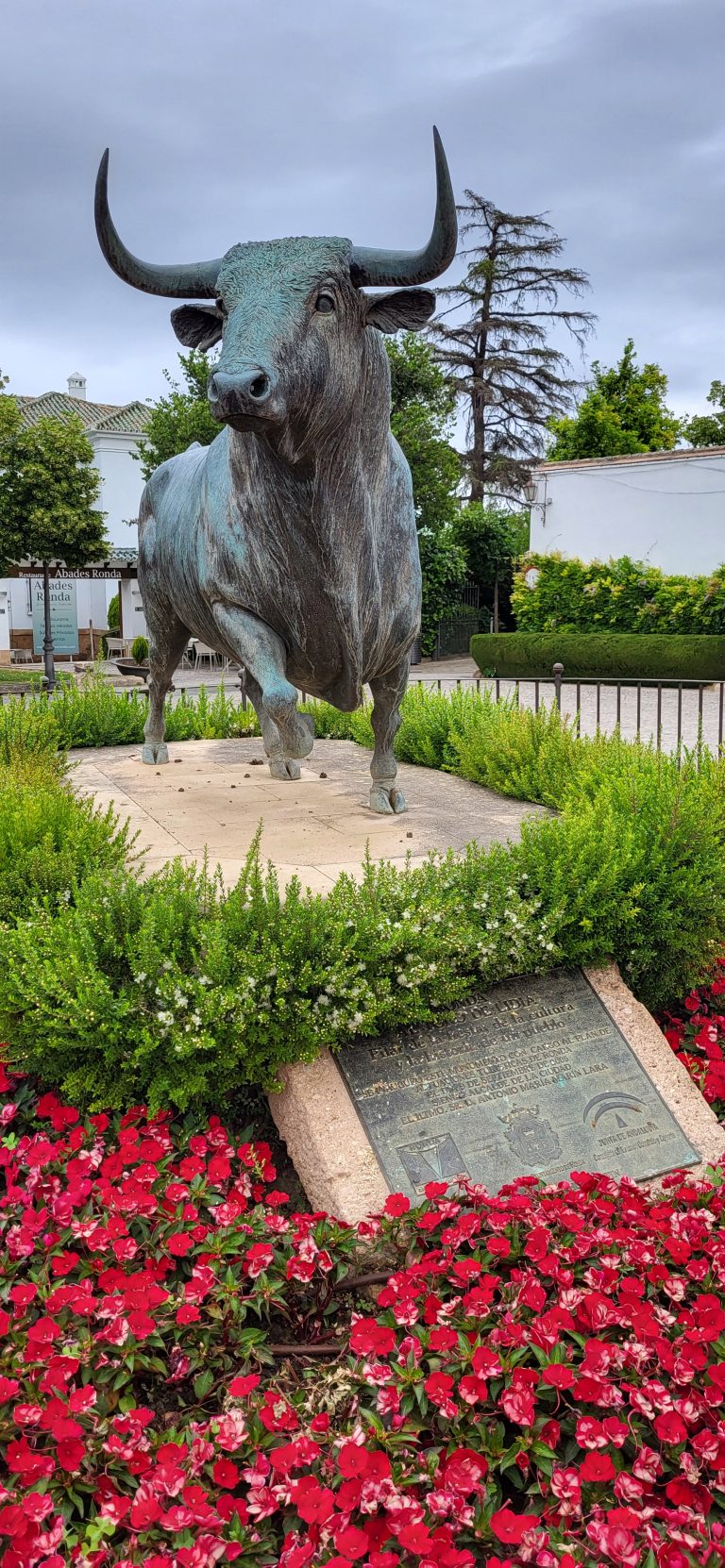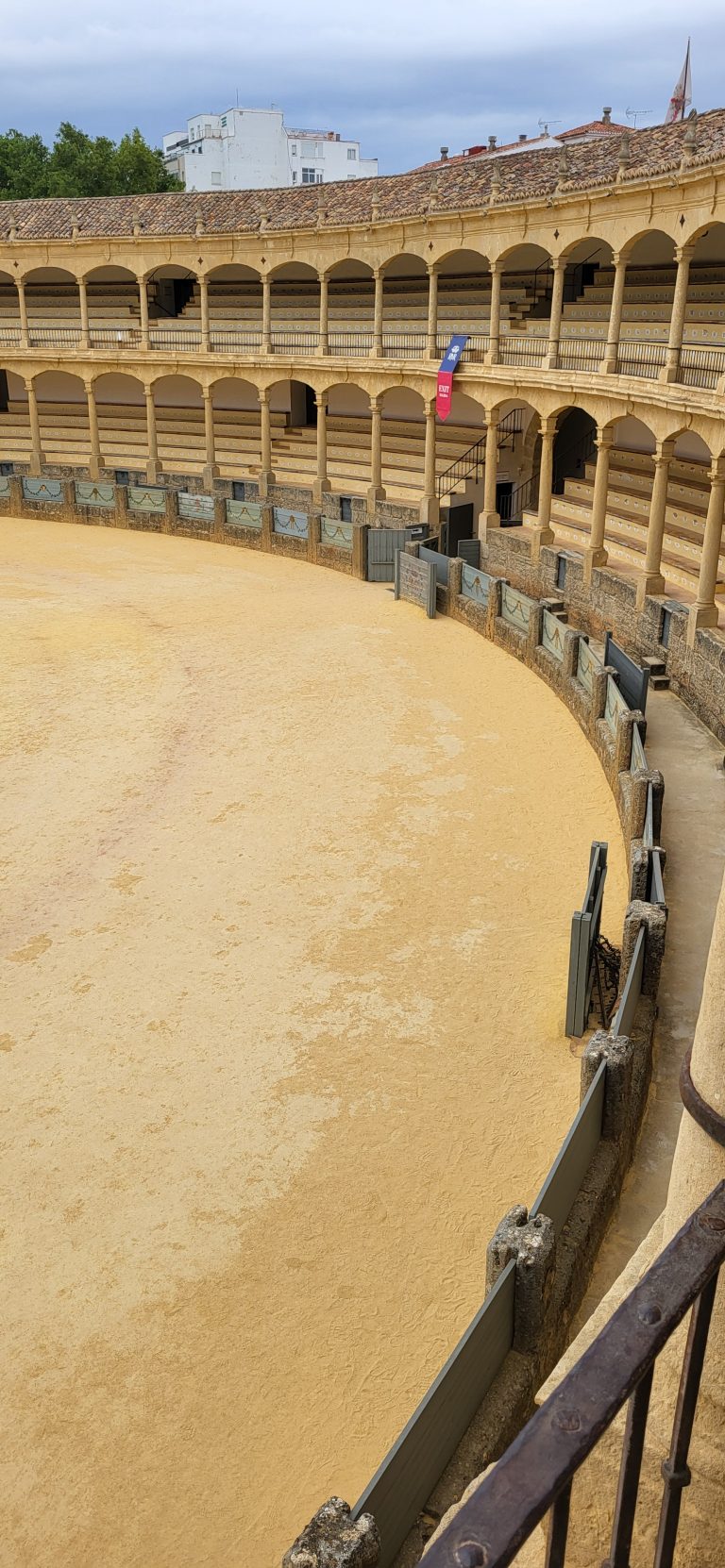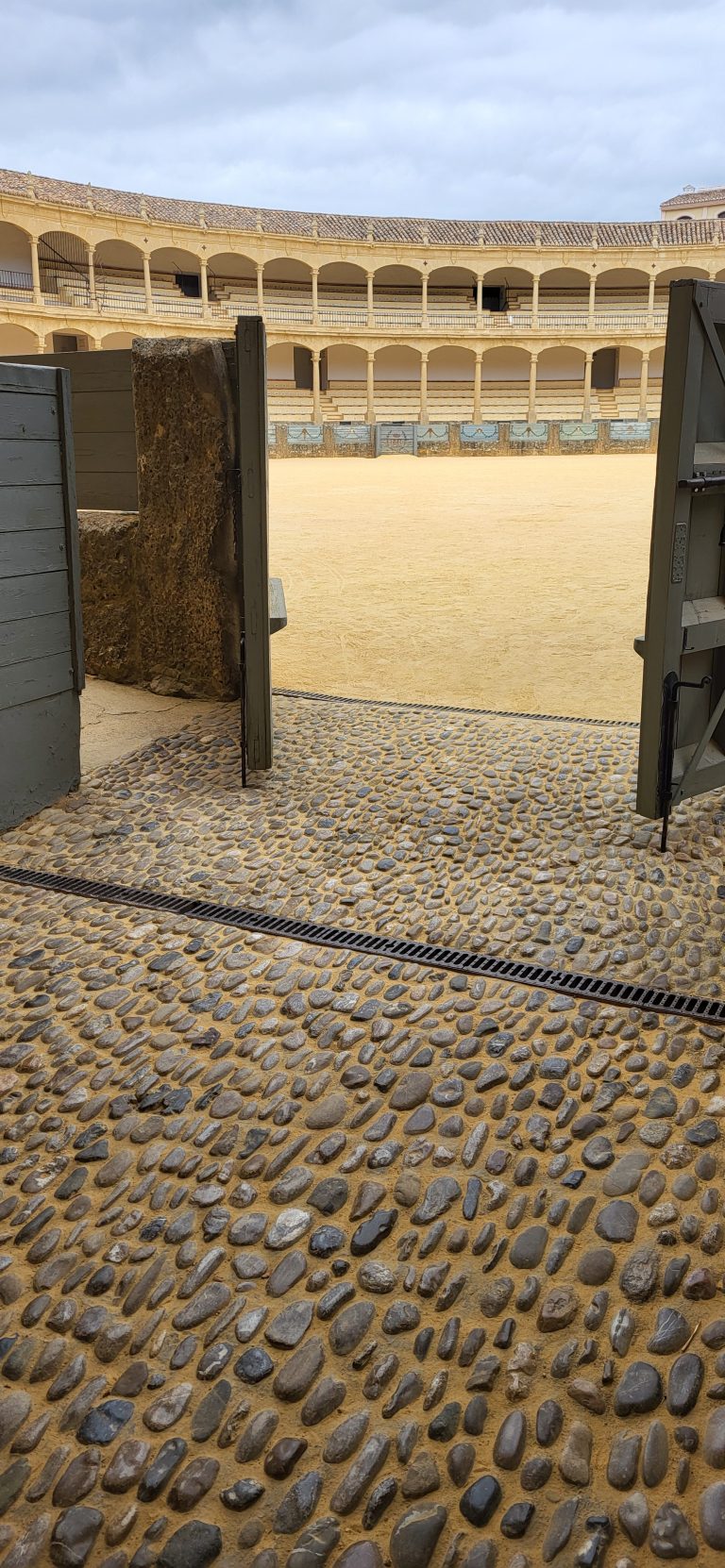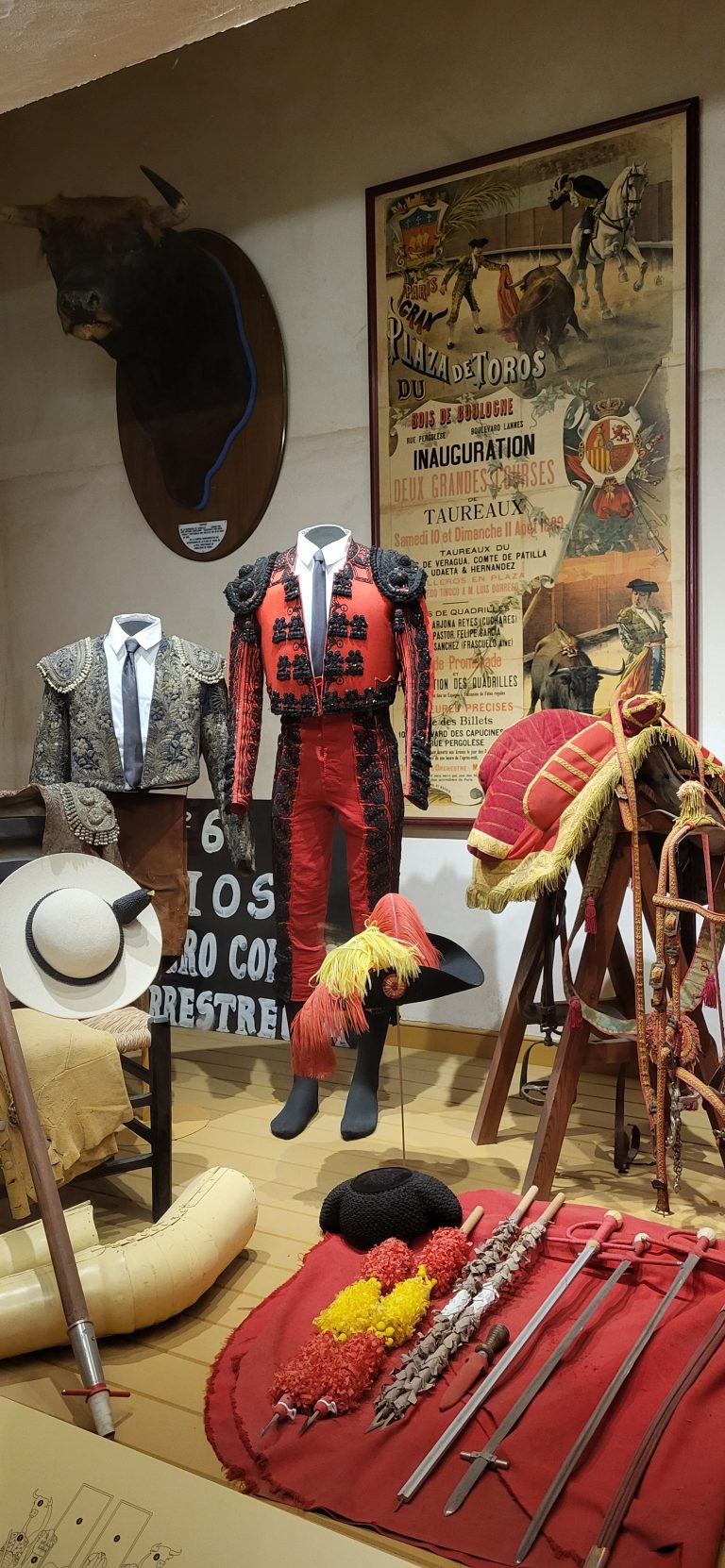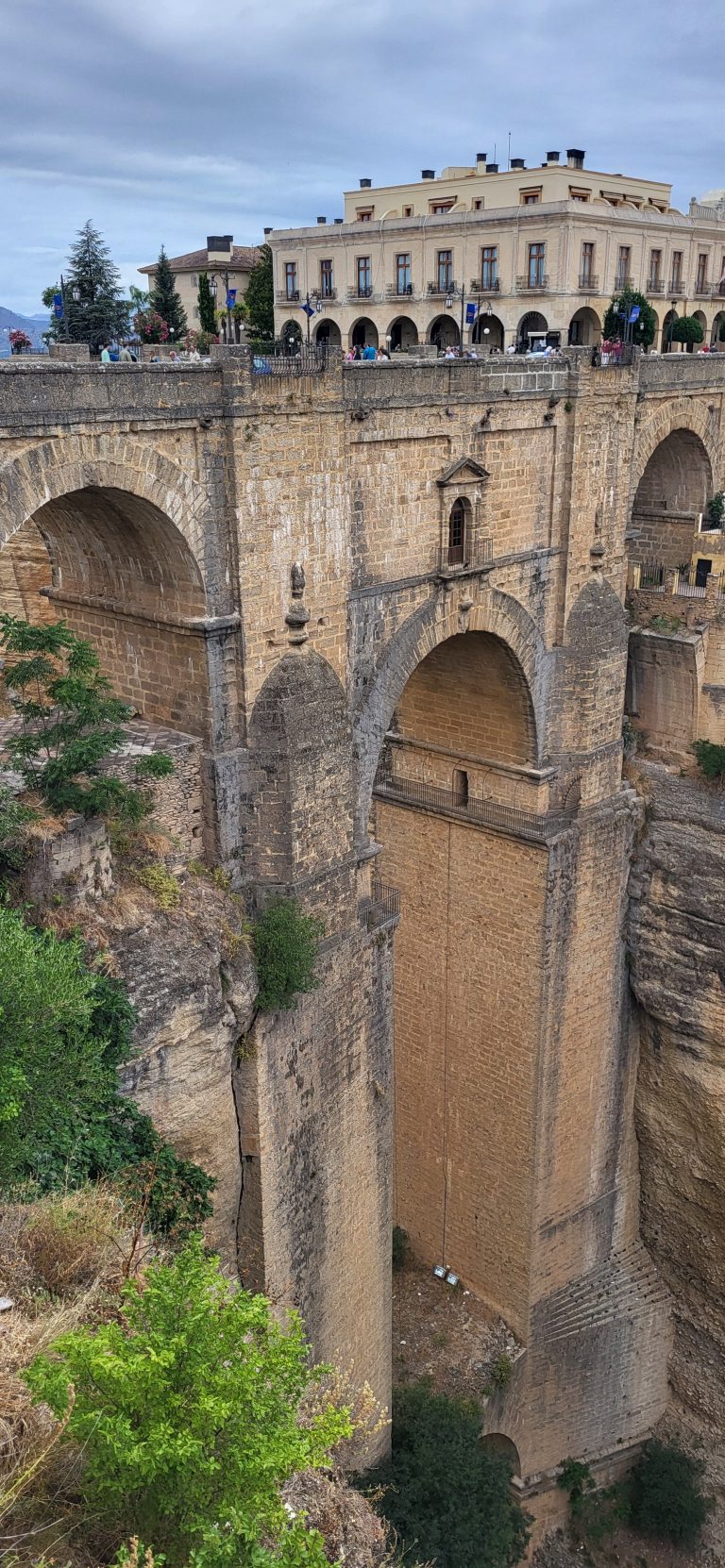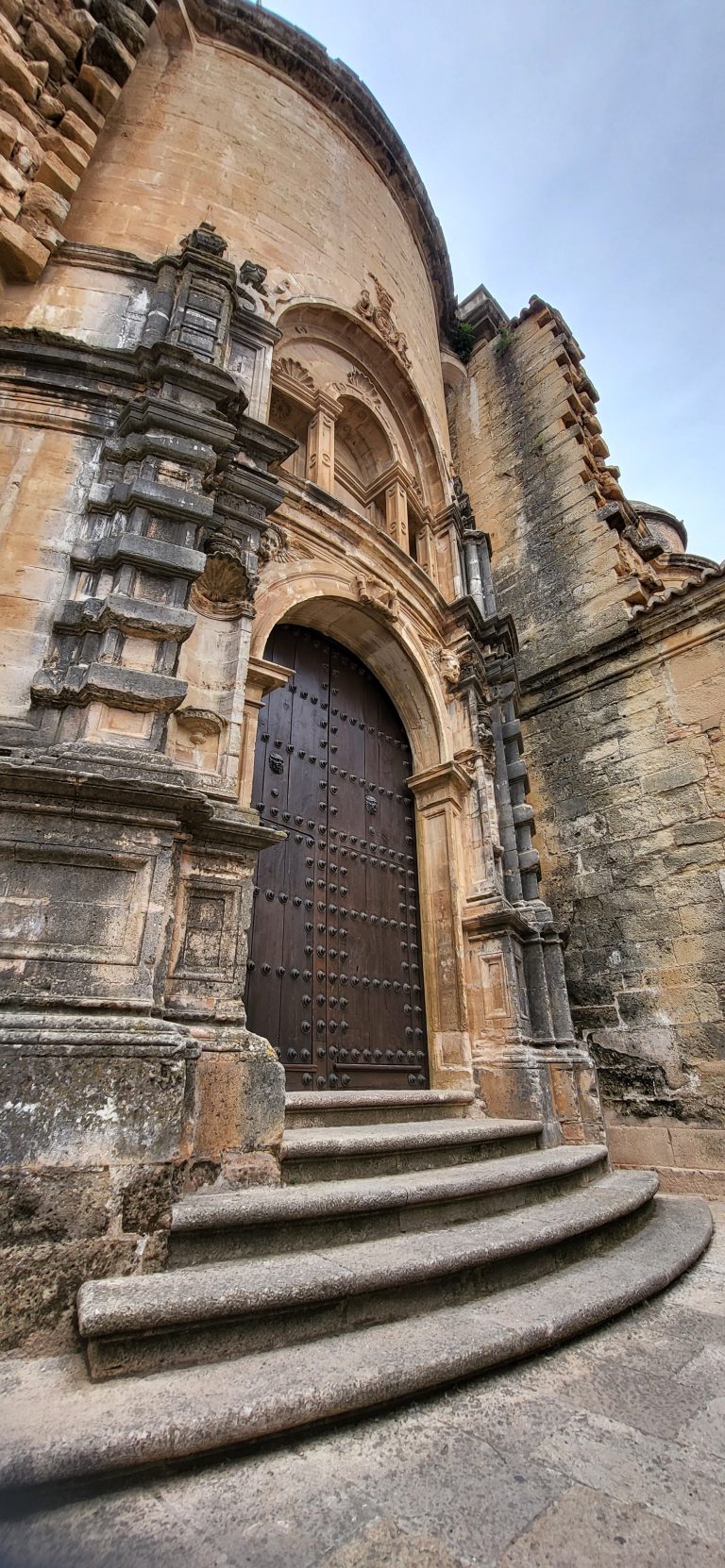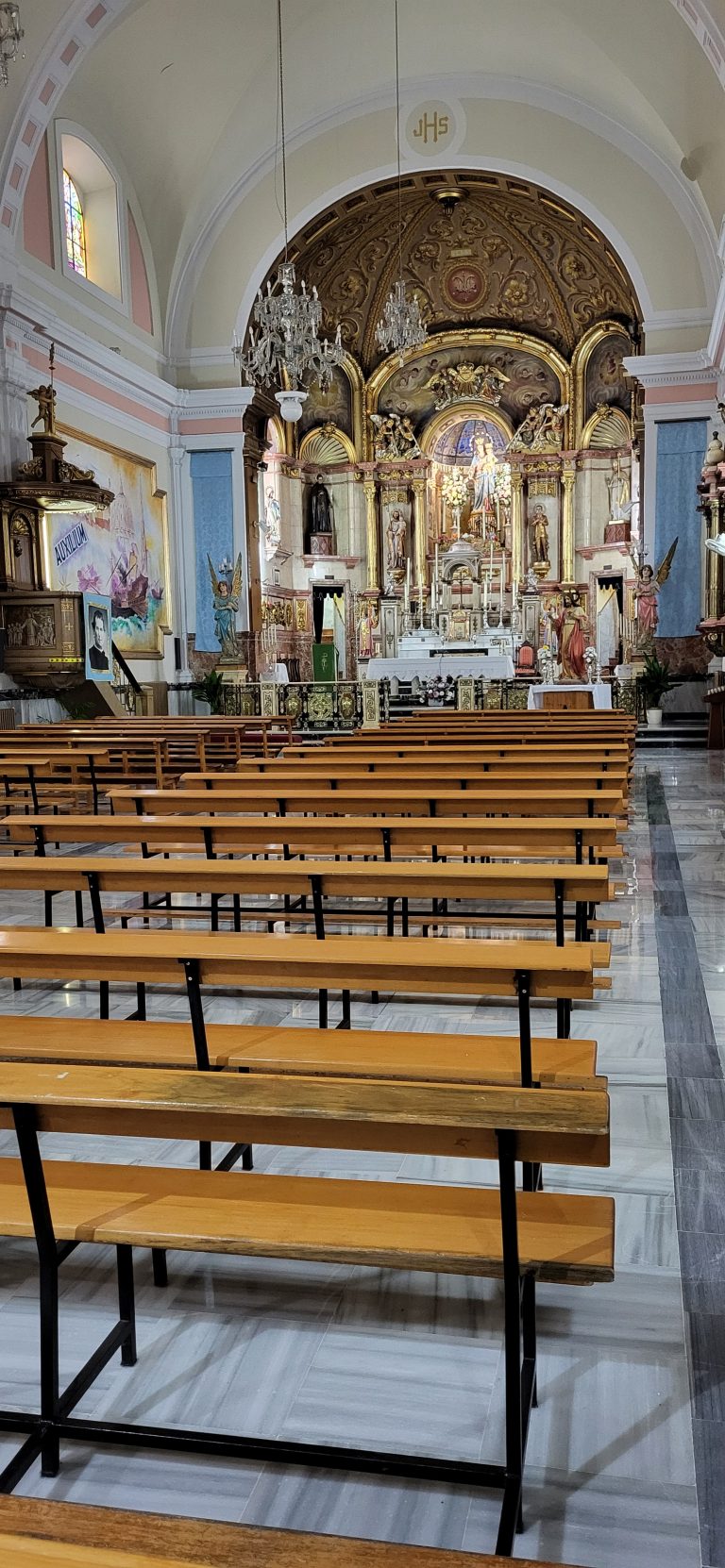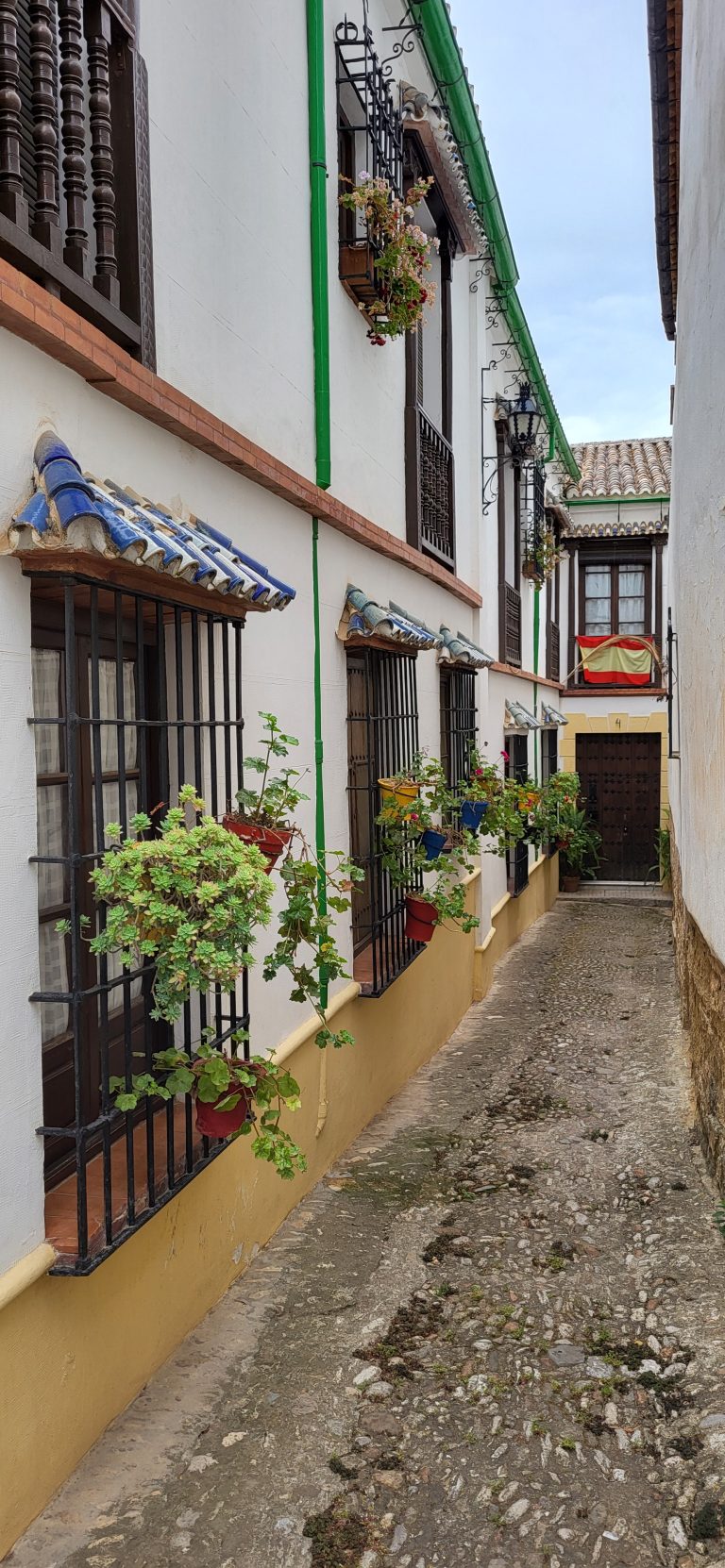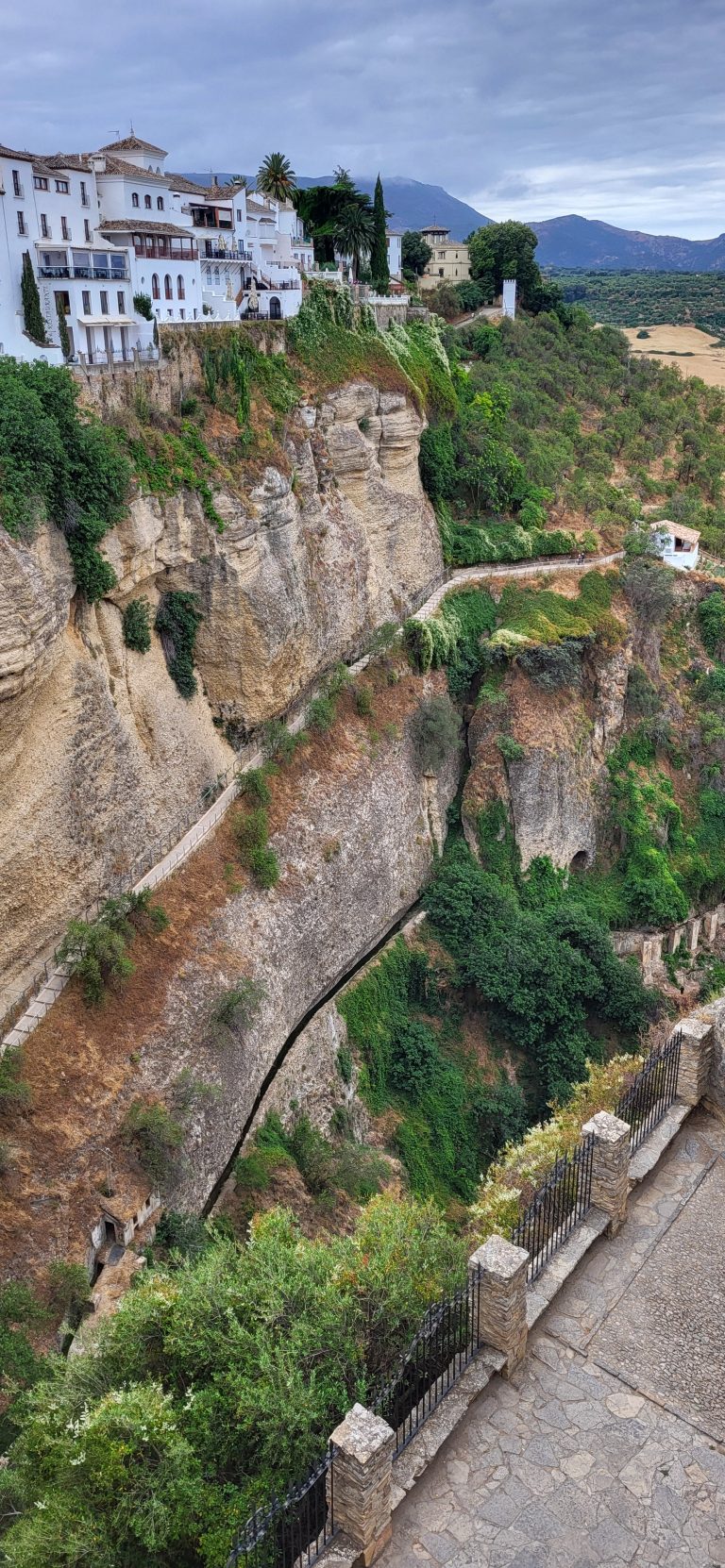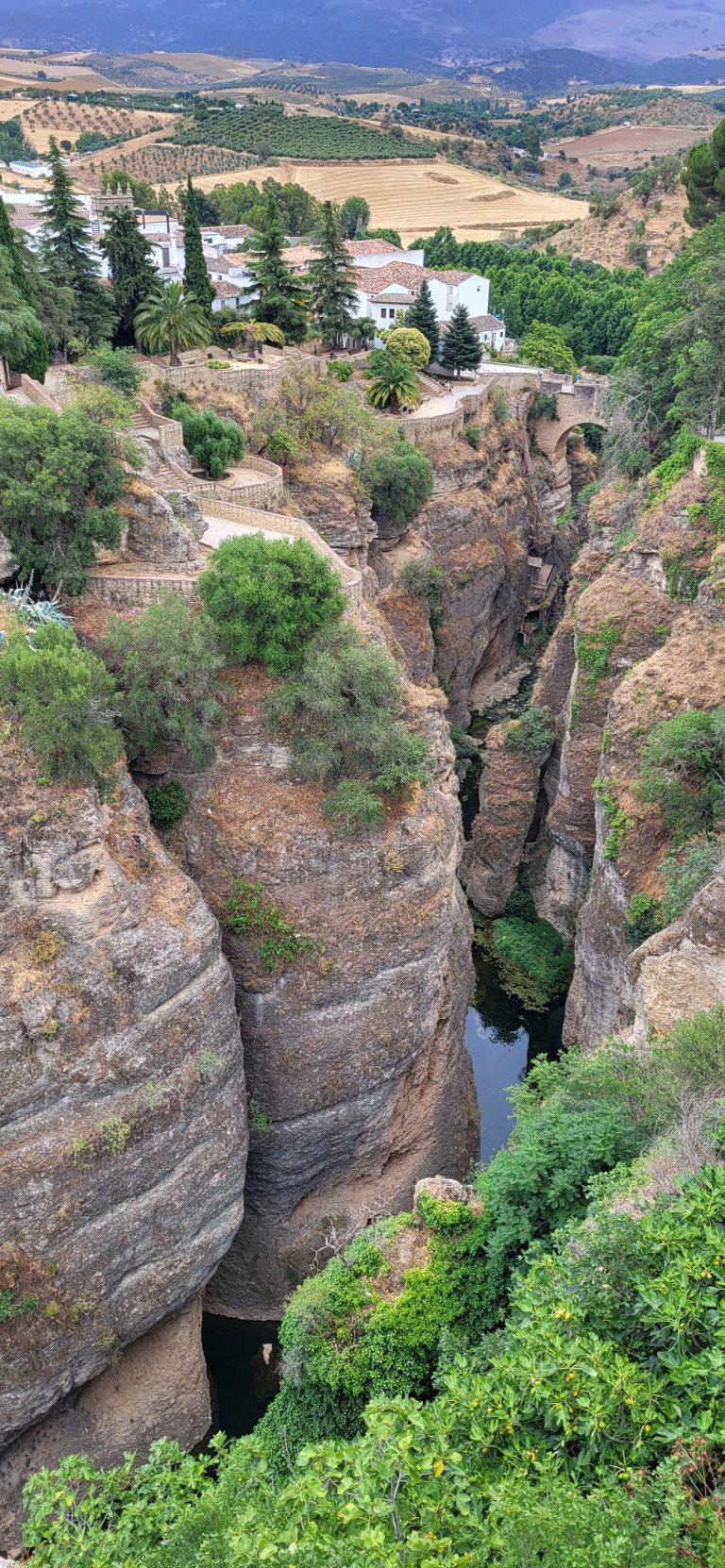On the way
A 1.5-hour drive took us inland via a northeast route, where the landscape changes to a more hilly countryside. On the way, we passed another place worth visiting—Caminito del Rey, a 3-kilometer-long footpath that clings to the walls of a narrow gorge. The walkway, which is suspended over 100 meters above the river below, was once known as one of the most dangerous paths in the world but has since been renovated for safer exploration. It takes about 2 to 3 hours to walk the entire route, and while the path is now secure, it still requires a moderate level of fitness due to its length and some uneven terrain.
Approaching the town from the north, we left the car at the central car park, as finding a free spot proved impossible, and I didn’t want to spend hours cruising around. Ronda is quite small, so walking is an absolutely fine and convenient way to explore. From the car park, we took a walk towards the Alameda del Tajo park to reach the edge of the cliff. There, you can find several viewpoints overlooking the valley below.
The Story of Bullfighting
Following the edge of the cliff, you’ll reach Plaza Teniente Arce. The first thing you’ll notice is El Toro—a statue of a bull that hints at what this place is all about. Yes, you’ve guessed it—bullfighting. Although bullfighting has been in decline in Spain, you can learn a lot about it right here in the Plaza de Toros and the Museo Taurino De La Real Maestranza De Caballería De Ronda. It provides a comprehensive insight into the tradition, so if you have time, it’s worth visiting.
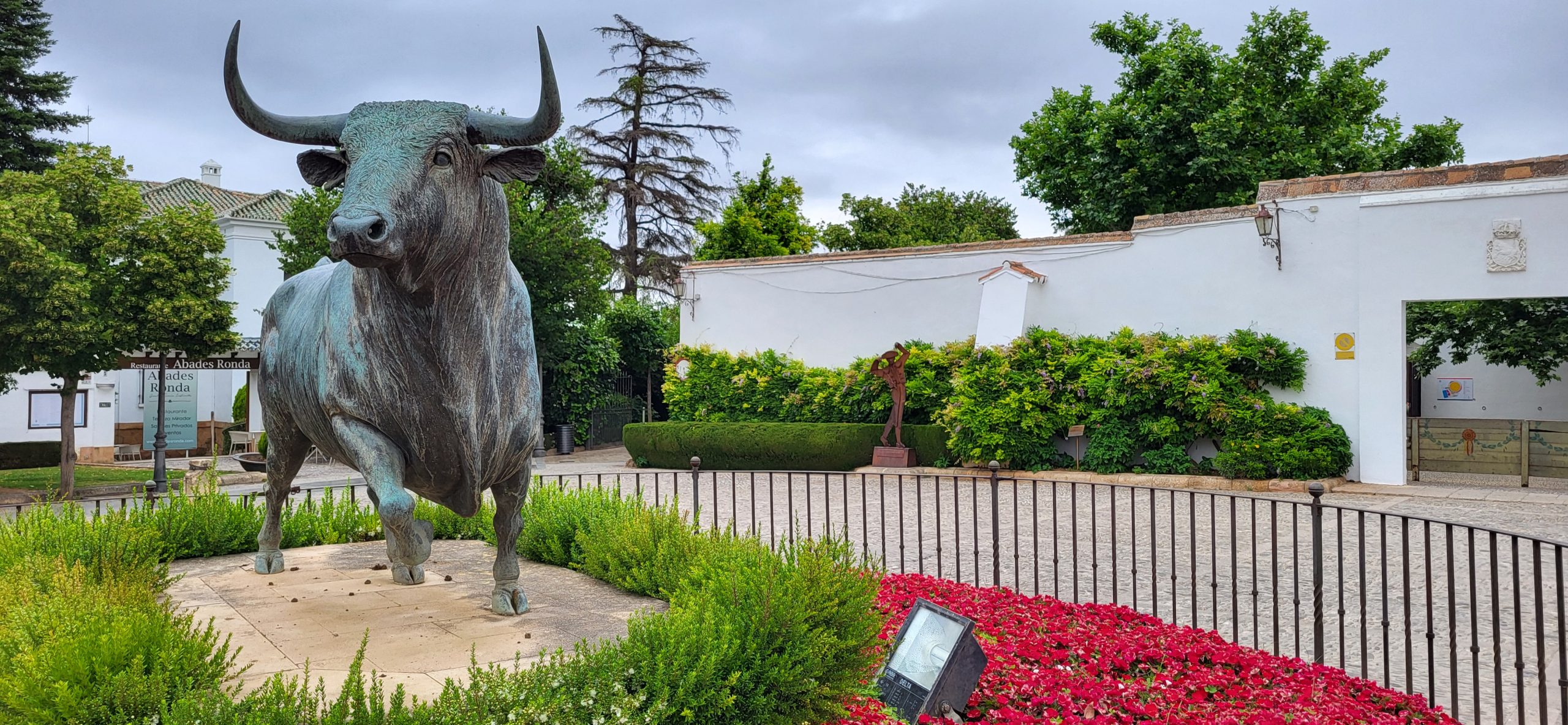
El Torro, Ronda, image credit: Juraj Hrabovsky, HUP
Sweet tooth of Ronda
Opposite the Plaza de Toros is the Oficina Municipal de Turismo de Ronda, a tourist information center, in other words, with very friendly staff willing to help with everything. We asked where to get good churros, a traditional Spanish breakfast dish. Churros are a type of fried dough, but they don’t have the shape of a doughnut. Instead, they are elongated and sometimes twisted into a pretzel shape. Served with a sauce of your choice, usually a sweet one, and a cup of coffee, churros are a thing of beauty. An important observation is that kids love them too.
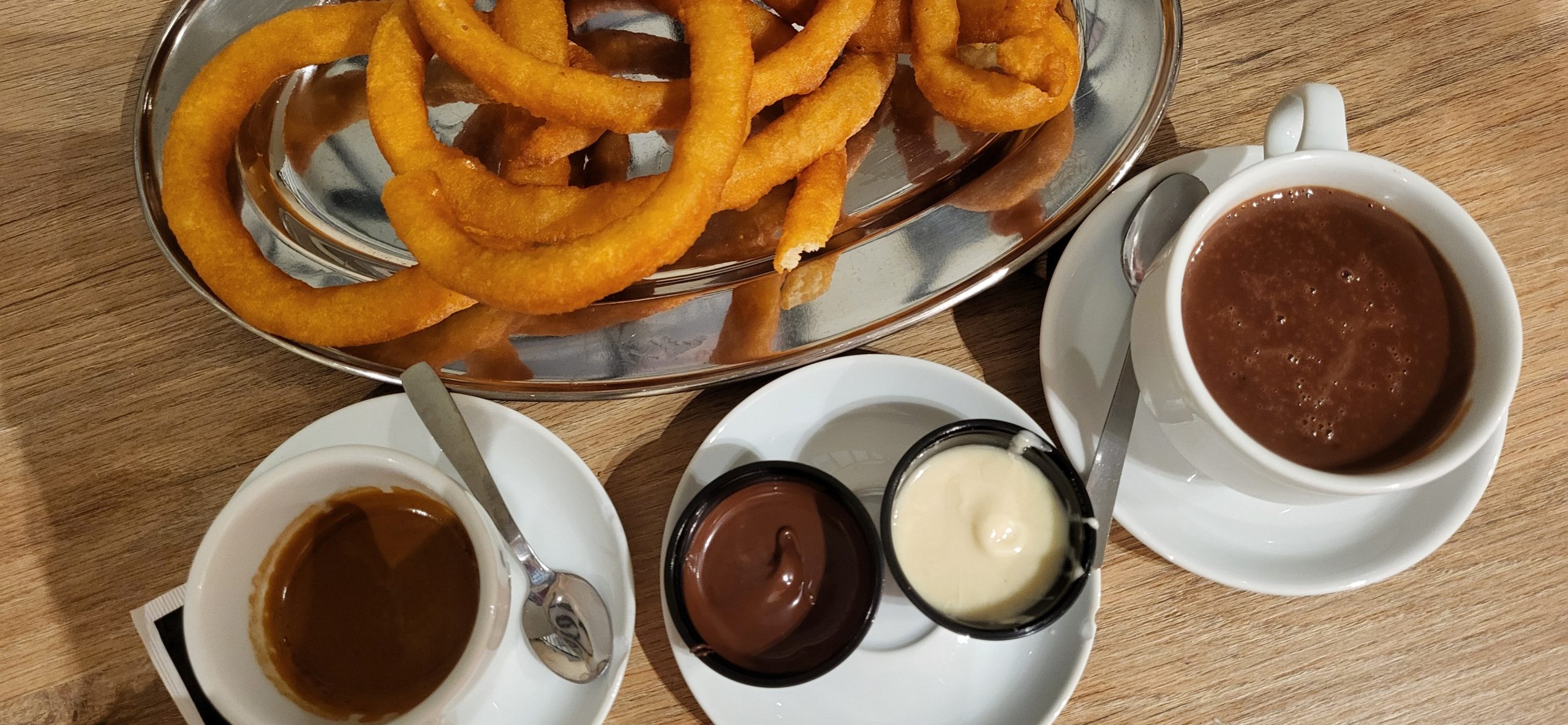
Churros breakfast, image credit: Juraj Hrabovsky, HUP
Across the bridge
Our next stop was Puente Nuevo, undoubtedly the most famous architectural feature of the town. The New Bridge crosses the deep gorge that divides the old town in two. A busy place buzzing with activity, it has viewing platforms on each side where you can see the whole bridge in all its glory. The bridge serves as a bottleneck for the old town, so we decided to walk through to the quieter narrow streets. Although less busy, there are still a lot of people everywhere.
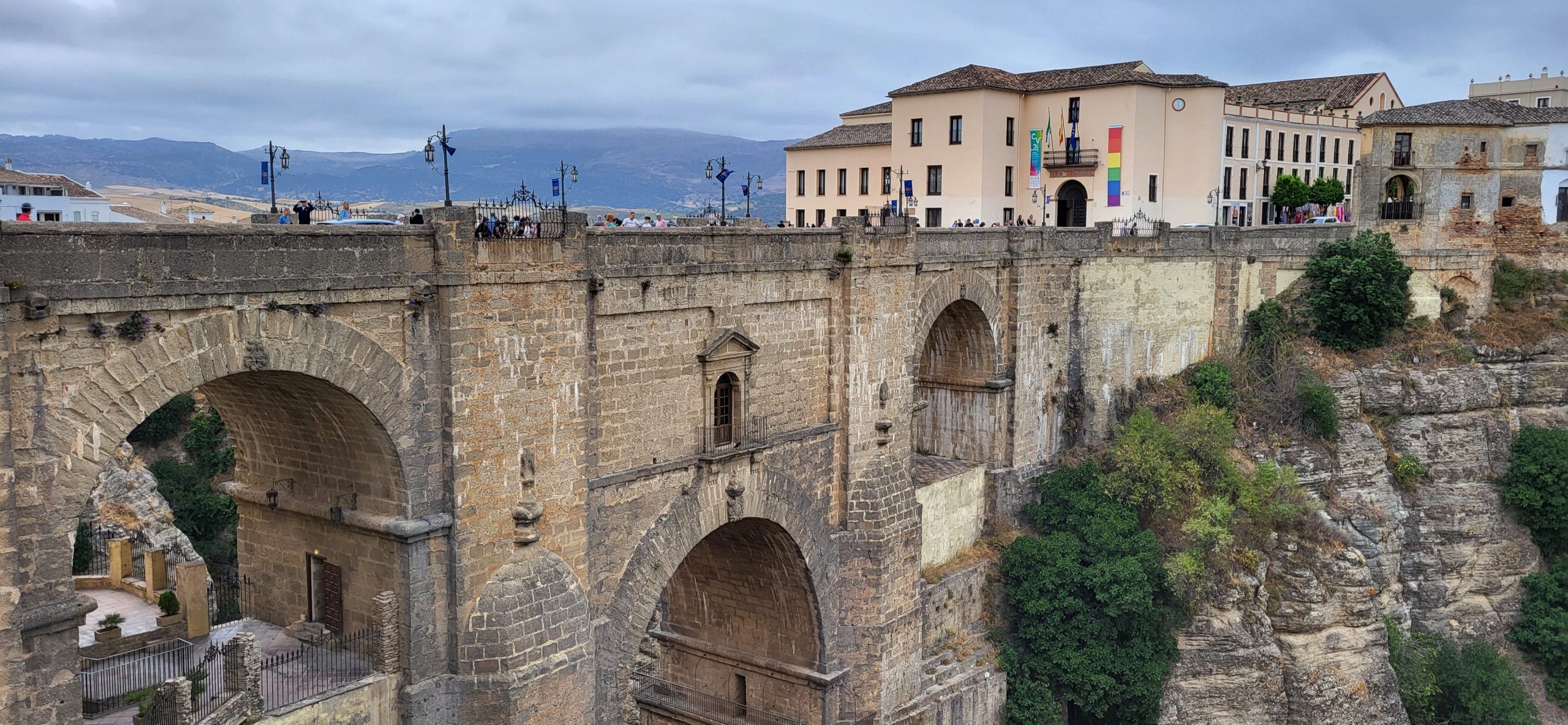
Puento Nuevo, Ronda, image credit: Juraj Hrabovsky, HUP
You will often find the presence of San Juan Bosco, the founder of the Salesian order. If you take the route towards Plaza de María Auxiliadora, you’ll pass by his statue, the Monumento a San Juan Bosco, and the museum Casa Museo Don Bosco. In the corner of a small square covered by flowering trees sits the Puerta de los Molinos, a downhill path that takes you to the ticket office. For a fee, you are equipped with a safety helmet and allowed to walk down to the bridge. The seemingly ideal viewing platform next to the ticket office is also not free (just in case you were thinking about it), and the ticket office building is purposely constructed to obstruct the view, encouraging you to buy a ticket.
Exporing the old town
Back in town, a few more streets to the south is Plaza Duquesa de Parcent, a lovely square enclosed by historical buildings. There are some restaurants with terraces where you can enjoy a meal or drink in the shade of the trees and take a rest. Don’t miss the Santuario de María Auxiliadora church to the south. If you’re into churches and cathedrals, there is another one in the square: Iglesia de Santa María la Mayor.
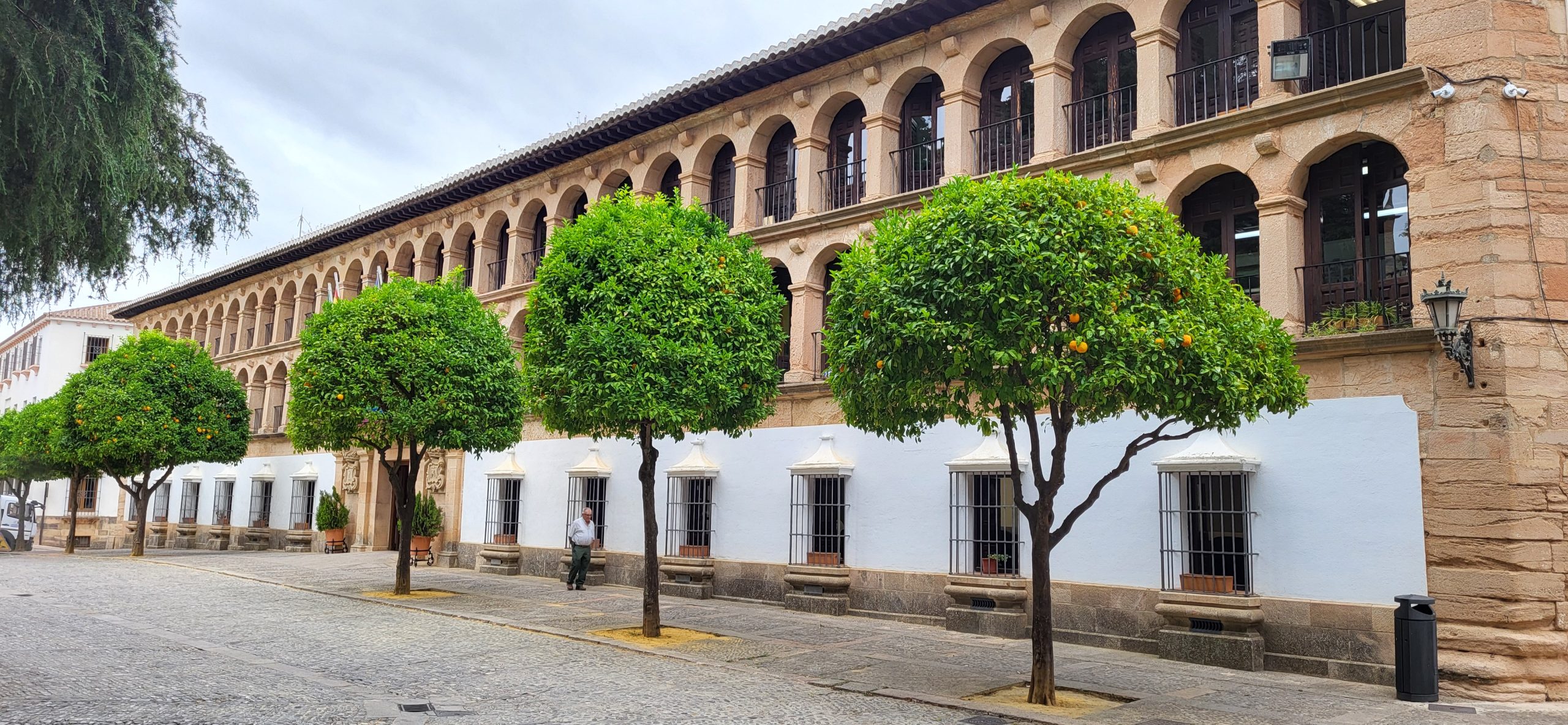
Plaza Duquesa de Parcent, Ronda, image credit: Juraj Hrabovsky, HUP
Local taste
Walking is a great way to get around, but it can make you hungry. With our stomachs grumbling, we decided to find a place to eat. Being in Ronda, we wanted to try the local specialty, Rabo del Toro, which is nothing less than bull’s tail. It surpassed all my expectations. Instead of the hard, chewy piece of muscle I had imagined, it turned out to be delicate, tender meat cooked with vegetables and covered in a tasty gravy. The dish originated from the practice of using every part of the animal during bullfighting. It is typically prepared by slow-cooking the tail in a flavorful sauce made from red wine, vegetables, and spices. The slow cooking process breaks down the tough meat, resulting in a tender and savory dish that pairs wonderfully with rice or crusty bread. Truly a finger-licking highlight.
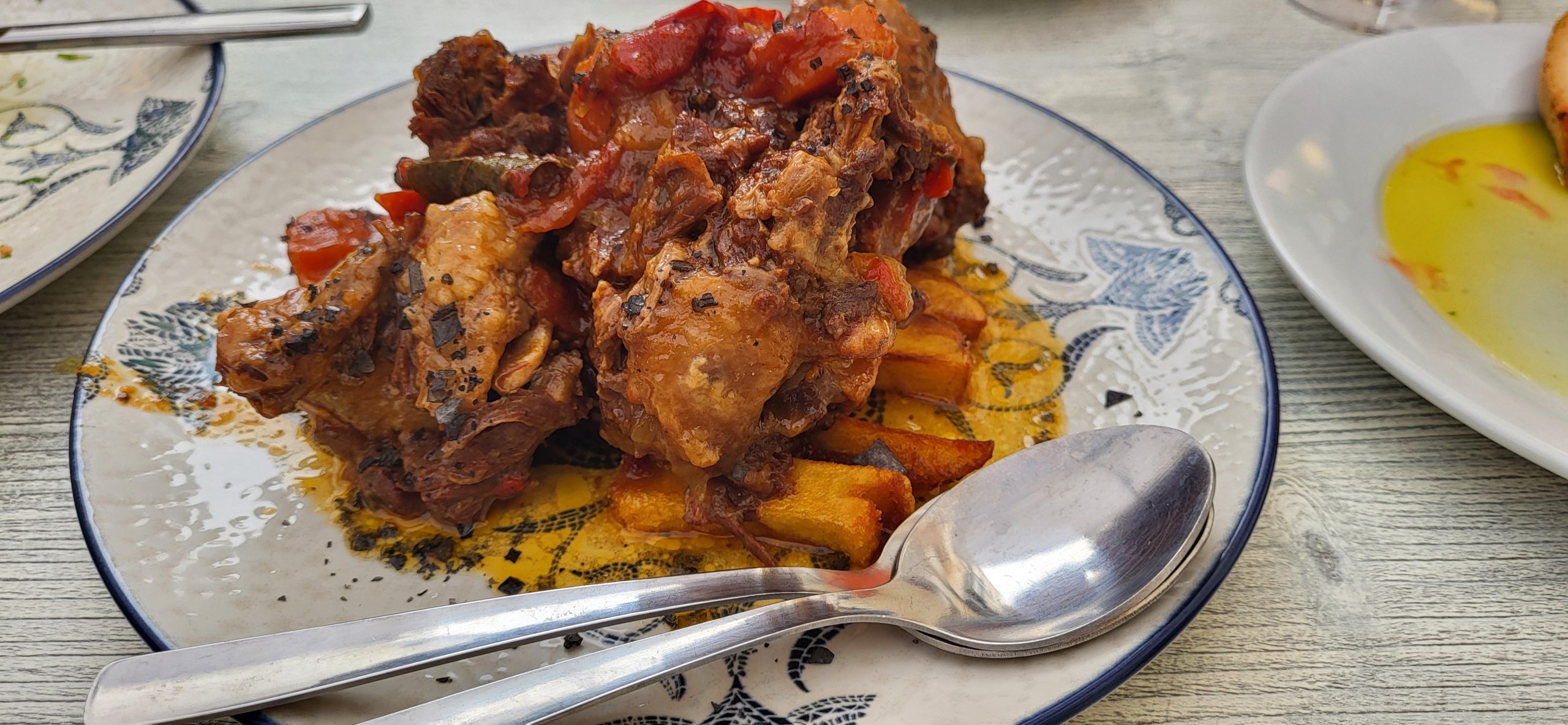
Rabo del Toro, image credit: Juraj Hrabovsky, HUP
If you like shopping, head to Carrera Espinel, a typical high street full of familiar shops.
Ronda is a place full of history and well worth visiting. If you can put the crowds aside, with a bit of imagination, the old town will transport you centuries back and provide a great experience to remember.
SUMMARY
Driving time: approx. 1:30 hours (by northern route variant)
Distance: 108 km (from Torremolinos A7, A-357, A-367)
Parking: Paid, GPS 36.74564490865082, -5.165518556186619
Eating: Tejeringo´s Coffee Ronda
Tapas Bar Elias
Sites: Plaza de toros and Museo Taurino De La Real Maestranza De Caballería De Ronda
Puente Nuevo
Plaza de María Auxiliadora
Plaza Duquesa de Parcent
Santuario de María Auxiliadora
Iglesia de Santa María la Mayor

